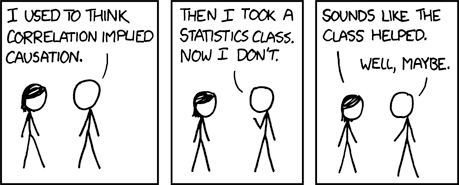Statistics, you are tricky
- Maggie Maiville
- Apr 12, 2023
- 3 min read
In 2013, a student I had been working with for years took statistics for her senior math class. I told her I would try to help her in the class. I could not figure it out, even with help from a housemate. I had always thought my superpower was figuring out math using just notes and example problems. Apparently, that was not the case for statistics. I did not have enough Knowledge of Curriculum to sort it out (Hill & Ball, 2009).
In 2016, I was spending time with my cousin who had been a math major in college. She said something that stuck with me. “It always boggles my mind that people say they liked geometry more or algebra more. It’s such a common statement. But they are both algebra! Geometry is not a different kind of math.” It’s true that in geometry students are dealing with shapes and lines to set up problems, but all the actual math is algebra. This helps explain why I struggled teaching statistics without taking the class: it is not just algebra. This epiphany increased my Knowledge of Content and Teaching because understanding that geometry content is essentially algebra content helped me frame it differently as I teach (Hill & Ball, 2009). I have a student currently who says once he set up a problem, “And now it is just algebra.” Pointing that out to him helped him have more confidence in his geometry skills.

This cartoon points out a way statistical thinking is different from other forms of logic.
I have spent much of my time that has been dedicated to data and probability to reflecting on statistics. There is a probability unit in Algebra 2 and some in the genetics unit of biology. There are many examples of dealing with data in all of the sciences. However, despite having some regular interaction with data and probability, statistics remains something of an enigma to me. Part of the challenge, which I have reflected on in various discussions, is that so much of statistics uses technology for finding answers. It is easy to end up with an instrumental understanding of statistics due to that technological reliance, based on my observations (Skemp, 1978).
In addition to noticing my curiosity in exploring statistics, I noticed that my peers steered away from that topic. They admitted that they had very little experience with statistics, and that they never taught it. It is strange to me that we, as a culture, have so little literacy in statistical reasoning when it is so prevalent around us. For example, power posing became a popular “statistically backed” practice for people who wanted to be more successful. Statisticians call the original power pose study “small” and “noisy” (Gelman & Fung, 2016). There were so few people in the original study that if one person had indicated no change from power poses, there would have been no statistical significance. Most people lack the knowledge to notice issues like that in studies.
Here are my takeaways from exploring statistics specifically during probability and data: I want to know more about statistics. I want everyone to know more about statistics. I believe that statistics being further away from algebra than other types of commonly practiced math make it more difficult to understand without specifically seeking out Specialized Content Knowledge in the area (Hill & Ball, 2009).
Image credit: https://xkcd.com/552/
References
Gelman, A., & Fung, K. (2016, January 19). Amy Cuddy's "Power pose" research is the latest example of scientific overreach. Slate Magazine. Retrieved April 10, 2023, from https://slate.com/technology/2016/01/amy-cuddys-power-pose-research-is-the-latest-example-of-scientific-overreach.html
Hill, H., & Ball, D. L. (2009). The curious - and crucial - case of Mathematical Knowledge for Teaching. Phi Delta Kappan, 91(2), 68–71.
Skemp, R. R. (1978). Relational understanding and instrumental understanding. The Arithmetic Teacher, 26(3), 9-15.

Comments